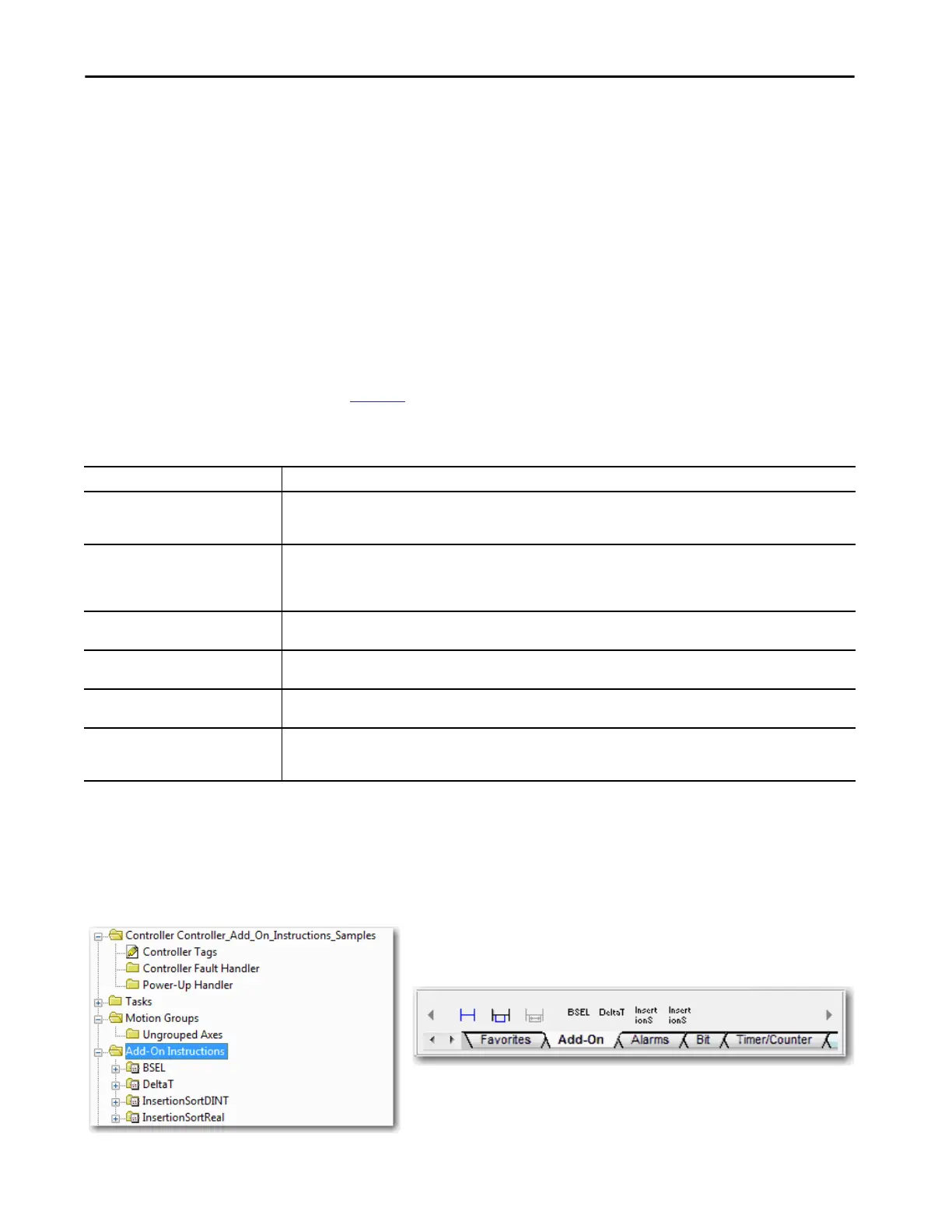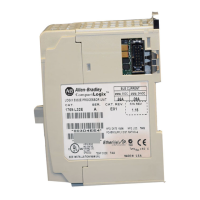Rockwell Automation Publication 5069-UM002A-EN-P - January 2019 191
Develop Control Applications Chapter 8
Add-on Instructions
With the Logix Designer application, you can design and configure sets of
commonly used instructions to increase project consistency. Similar to the
built-in instructions that are contained in Logix 5000 controllers, these
instructions you create are called Add-On Instructions. Add-On Instructions
reuse common control algorithms. With them, you can do the following:
• Ease maintenance by creating logic for one instance.
• Apply source protection to help protect intellectual property.
• Reduce documentation development time.
You can use Add-On Instructions across multiple projects. You can define your
instructions, obtain them from somebody else, or copy them from another
project.
Table 12 explains some of the capabilities and advantages of use Add-On
Instructions.
Once defined in a project, Add-On Instructions behave similarly to the built-in
instructions in Logix 5000 controllers. They appear on the instruction toolbar
for easy access along with internal instructions.
Figure 37 - Add-on Instructions
Table 12 - Add-on Instruction Capabilities
Capability Description
Save Time With Add-On Instructions, you can combine your most commonly used logic into sets of reusable instructions. You save time when
you create instructions for your projects and share them with others. Add-On Instructions increase project consistency because
commonly used algorithms all work in the same manner, regardless of who implements the project.
Use Standard Editors You use one of the following editors to create Add-On Instructions:
• Ladder Diagram
• Function Block Diagram
• Structured Text
Export Add-On Instructions You can export Add-On Instructions to other projects and copy and paste them from one project to another. Give each instruction a
unique, descriptive name to make it easier to manage and reuse your collection of Add-On Instructions.
Use Context Views Context views let you visualize the logic of an instruction to perform instant and simple online troubleshooting of your Add-On
Instructions.
Document the Instruction When you create an instruction, you enter information for the description fields. Each instruction definition includes revision, change
history, and description information. The description text also becomes the help topic for the instruction.
Apply Source Protection When you create Add-On Instructions, you can limit users of your instructions to read-only access. You can also bar access to the
internal logic or local parameters that the instructions use. This source protection lets you stop unwanted changes to your
instructions and helps to protect your intellectual property.
Controller Organizer
Instruction Toolbar

